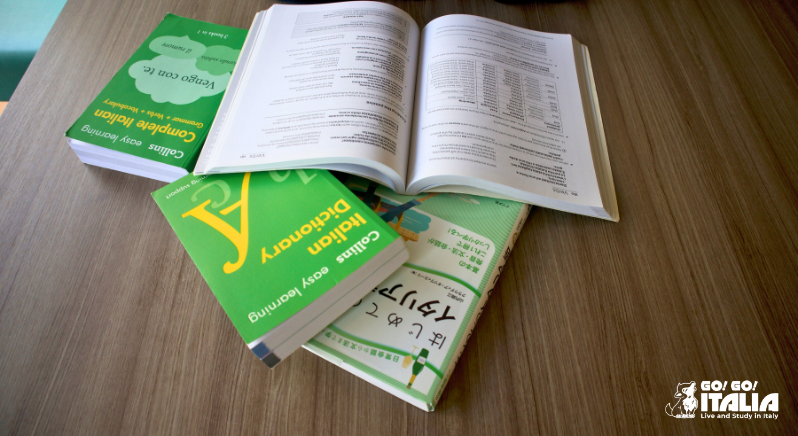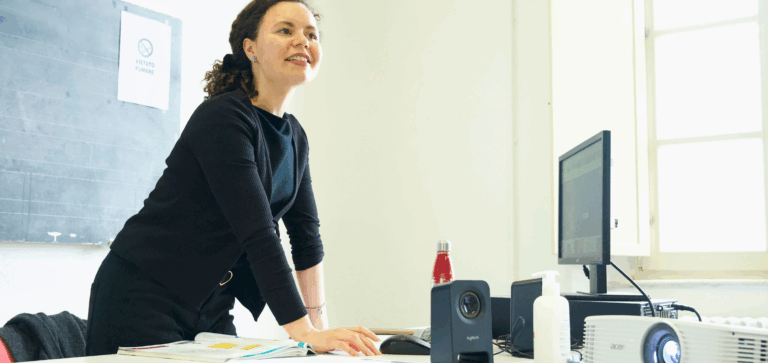Learning how to introduce yourself in Italian is one of the most important steps when starting to study the language. It’s a key skill whether you’re greeting a new friend, starting a job, or walking into a classroom for the first time. Just like in any language, the way you introduce yourself in Italian can change depending on how formal the situation is, who you’re speaking to, and even which part of Italy you’re in.
If you’re studying beginner Italian, mastering simple introductions will give you the confidence to start conversations and connect with people. In this article, we’ll walk you through all the essential phrases and tips you need to introduce yourself clearly and politely, no matter the context.

The basics: Saying your name
The most direct and casual way to introduce yourself is:
- “Mi chiamo [Name].“ – My name is [Name].
Example: Mi chiamo Marco.
Another option, slightly more informal:
- “Sono [Name].“ – I am [Name].
Example: Sono Giulia.
For very formal introductions, especially in a business or academic setting, you might hear:
- “Il mio nome è [Name].“ – My name is [Name].
This is a bit more stiff, but appropriate when you’re writing or speaking in highly formal contexts.
Talking about where you’re from
After your name, you’ll likely want to mention where you’re from.
- “Vengo da [city/country].” – I come from [city/country].
Example: Vengo da Tokyo. - “Sono di [city].“ – I’m from [city].
Example: Sono di New York.
If you want to specify nationality:
- “Sono [nationality].“
Example: Sono americana. (female) or Sono americano. (male)
Sharing your age
It’s common in casual conversations, especially among younger people or classmates, to mention your age.
- “Ho [number] anni.“ – I am [number] years old.
Example: Ho ventidue anni. (I’m 22 years old)
Note: In Italian, the verb avere (to have) is used for age, not essere (to be) like in English.
Talking about your job or occupation
In more adult or professional situations, you might share what you do.
- “Lavoro come [profession].“ – I work as a [profession].
Example: Lavoro come insegnante. (I work as a teacher) - “Sono un/una [profession].“ – I am a [profession].
Example: Sono una studentessa. (I am a student – female) - “Studio [subject].“ – I study [subject].
Example: Studio economia. (I study economics)

Describing your interests
To make your introduction more personal, especially in casual settings, you can talk about your hobbies:
- “Mi piace [activity].“ – I like [activity].
Example: Mi piace cucinare. (I like cooking) - “I miei hobby sono [hobbies].“ – My hobbies are [hobbies].
Example: I miei hobby sono leggere e viaggiare.
This is a great way to keep the conversation going and connect over shared interests.
Formal vs informal introductions
In Italian, there is a strong distinction between formal and informal speech. This affects not only the vocabulary, but also verb conjugation and pronouns.
- Informal (with peers, friends, classmates, younger people):
Use “tu“ and first-name basis.
Example: Ciao, come ti chiami? (Hi, what’s your name?) - Formal (with strangers, older people, professionals):
Use “Lei“ (you, formal) and possibly titles.
Example: Buongiorno, come si chiama? (Good morning, what’s your name?)
Formal expressions may include:
- Piacere di conoscerLa. – Nice to meet you. (formal)
- È un piacere fare la Sua conoscenza. – It’s a pleasure to make your acquaintance.
Informal versions:
- Piacere! – Nice to meet you!
- Molto piacere! – Nice to meet you (stronger emphasis)

Putting it all together
Here’s an example of a full informal introduction:
Ciao! Mi chiamo Elena, ho vent’anni e vengo da Barcellona. Sono una studentessa di architettura e nel tempo libero mi piace disegnare e fare lunghe passeggiate. Piacere!
And a formal version:
Buongiorno, il mio nome è Dott. Riccardo Bianchi. Vengo da Roma e lavoro come avvocato. È un piacere fare la Sua conoscenza.
Final tips
- Smile and maintain eye contact – Italian culture values warmth and friendliness.
- Be prepared to shake hands in formal settings.
- Practice pronunciation – saying your name or city with Italian phonetics helps others understand you better.
- Listen and mirror – adapt your language level to match the situation.
Ready to try? Start with “Mi chiamo [your name]” and go from there!
Want to start your Italian language adventure in Italy? Check our language school partners or contact us directly for more info!
Want to know more about Italy and Italian culture? Follow us on our social media!



